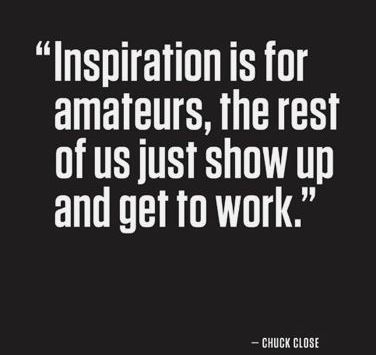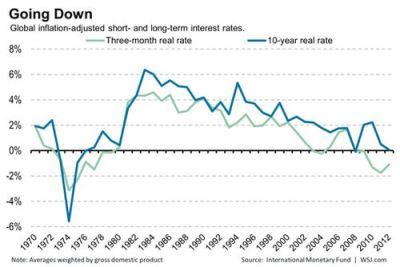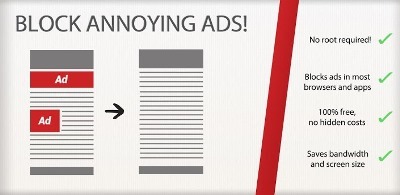Jeremie Averous's Blog, page 98
October 29, 2015
Why Inspiration is only for Amateurs
“Inspiration is for amateurs — the rest of us just show up and get to work” writes painter Chuck Close. I think it is actually a great quote about creativity, and against naivety.
 The people that are the most creative are those that devote themselves to a creative discipline, which simply involves a lot of work. And this discipline is also the only remedy known against Resistance, which will try to impede you of being creative and break new ground.
The people that are the most creative are those that devote themselves to a creative discipline, which simply involves a lot of work. And this discipline is also the only remedy known against Resistance, which will try to impede you of being creative and break new ground.
Chuck Close continues: “And the belief that things will grow out of the activity itself and that you will — through work — bump into other possibilities and kick open other doors that you would never have dreamt of if you were just sitting around looking for a great ‘art idea.”
Because connections will only be created if you invest yourself in the work. They won’t happen by themselves.
Read the full Chuck Close interview in ‘Chuck Close on Creativity, Work Ethic, and Problem-Solving vs. Problem-Creating‘, a great paper on many things related to creativity.

October 27, 2015
How Social Ratings Determine Our Choices
In a well-known but scary experiment on the music market, Duncan Watts and a team of Princeton researchers showed in 2006 that the popularity of songs was only very partially related to their appeal and quality – most of it is influenced by our peers’ rating.
 Ratings: What drives our choices?
Ratings: What drives our choices?In this experiment, people were either able to see or not the ratings from others. This created very significant differences in behavior. When rating was present, there was a big “luck premium”: whoever had some good ratings first would emerge as the uncontested winner at the end.
Hence, funny articles such as ‘Is Justin Timberlake a Product of Cumulative Advantage?‘. As mentioned in this paper, “The reason is that when people tend to like what other people like, differences in popularity are subject to what is called “cumulative advantage,” or the “rich get richer” effect. This means that if one object happens to be slightly more popular than another at just the right point, it will tend to become more popular still. As a result, even tiny, random fluctuations can blow up, generating potentially enormous long-run differences among even indistinguishable competitors — a phenomenon that is similar in some ways to the famous “butterfly effect” from chaos theory.” We come back to one of the main characteristics of the Collaborative Age.
There is no way to predict the popularity of your creation. But early support and excellent ratings from your tribe might be a good place to start!

October 24, 2015
Why Leaders Need to Be Authentic
“Becoming a leader is synonymous with becoming yourself. It is precisely that simple, and it is also that difficult” – Warren Bennis.
 I am increasingly convinced that authenticity is required to be successful in all our creative endeavors – and this includes leadership. It is quite strange because showing restraint and self-control is rather what has been inculcated to us. However, authenticity and the associated emotional messages are essential to move people, and to create change.
I am increasingly convinced that authenticity is required to be successful in all our creative endeavors – and this includes leadership. It is quite strange because showing restraint and self-control is rather what has been inculcated to us. However, authenticity and the associated emotional messages are essential to move people, and to create change.
Depending on our education and the circumstances, it can be tough to authentic, and it needs to be dosed right and be timely. Still I have found that every time I was authentic and connected to my feelings, something happened that hastened progress.
Become yourself and be authentic. It is the secret of great leaders.

October 22, 2015
Why Creating a Startup is About Building a Different Future
“Positively defined, a startup is the largest group of people you can convince of a plan to build a different future” writes Peter Thiel in ‘Zero to One: Notes on Start Ups, or How to Build the Future‘.
 Early Google Employees
Early Google EmployeesThis vision of a different future may be more or less ambitious, and intend to touch more or less people in the world. It might be within a small specialized niche or intend to take the world by storm. However, any real startup will be built on the premise of bringing a change to the world.
Actually this criterion might be an excellent differentiator between real startups and new companies that only intend to milk a situation.
Peter Thiel continues along the same trend of thought: “A new company’s most important strength is new thinking: even more important than nimbleness, small size affords space to think”
In my experience, the quick iterations around product, marketing, and business model do mobilize a significant dose of mental power and unending discussions. And indeed, the need to create value in a commercial startup (get revenue before funding is exhausted) is a great incentive to create something that will change the world somehow.
If you want to build a different future in a context where you’ll really mobilize your thinking, creating a startup is the way to go.

October 20, 2015
Why the Historical Trend of Interest Rates Should Be to Get Lower
Interest Rates represent our preference between a dollar today and a dollar in some time in the future. In effect, they represent our preference between now and later.
 Real interest rates getting lower over long times: an illusion or a reality?
Real interest rates getting lower over long times: an illusion or a reality?Because of the increased life expectancy and hence, capability to make plans for the future, the availability of future money should be less discounted than when we had short life expectancy and had to enjoy more the moment! We should thus observe that over time, the interest rates should decrease.
Of course, it is difficult to observe this trend with the high variability of the interest rates (real interest rates, i.e. interest rates minus inflation, should be considered here). Lately since the 1960’s it has decreased; and it is quite lower than the 5% per year without inflation that was enjoyed in the 19th century. It can be expected to rise again in the next few years, but probably not to very high levels.
I believe that it is possible that in the Collaborative Age we live with generally lower interest rates than the historical averages. Value will be created otherwise through creativity, but because we can plan for decades ahead on average, there will be a less steep discount of the future.

October 17, 2015
Why You Always Need to Look for the Real Underlying Problem
It is now well known in consulting that the issue which you are called in to solve is rarely the real issue at stake. Most of the time, there is some underlying problem which is much more serious and that needs to be addressed heads on.
 Do you see the problem? If you don’t see the lion look at the problem from further!
Do you see the problem? If you don’t see the lion look at the problem from further!This issue is explained for example in Peter Block’s ‘Flawless consulting‘ book.
And quite often as consultants, as we are not infallible, we start addressing some surface problem first before realizing what the main issue really is.
Also, the real issue is often more difficult to tackle because it is generally a much deeper issue related to governance and people’s behavior.
When called in to resolve an issue, always take a deep breath and some time to figure out whether there would not be a deeper underlying problem that would better need to be resolved. It is generally the case, and your intervention will be much more powerful.

October 15, 2015
How the Rise of Ad-Blocking Software Questions Internet’s Business Model
Most of large internet companies are funded by advertising, such as Google and Facebook. In exchange for the provision of some free services (of high value to us, but highly scalable), they use the data collected to target advertisement, with the expectation to increase the advertisement click-through rate hence their revenues.
 Adblock software is a response to this, as it blocks ads from showing up on pages. It definitely improves performance. The most successful of these software originated in Germany, which has a fierce data protection approach shaped by a reaction to the years of internal state-spying in East Germany.
Adblock software is a response to this, as it blocks ads from showing up on pages. It definitely improves performance. The most successful of these software originated in Germany, which has a fierce data protection approach shaped by a reaction to the years of internal state-spying in East Germany.
While these software remained marginal they were a limited threat. But it tends to grow exponentially, reaching 40% of the users in Germany! (see ‘Ad Blocks’ Doomsday Scenarios‘ by Frederic Filloux) Now it appears that Apple has included one of such software natively in their latest browser (see ‘What the Adblocker debate reveals‘) and that might change significantly the industry. Of course it is a nice strategic coup from Apple to weaken Google, as Apple does not depend on advertisement as a primary source of income. But it nevertheless poses a great threat to much of the internet industry, as the advertising community does not seem to have done anything against it yet.
The balance between intimacy, the usefulness of targeted ads and the economy of internet is still not settled. The next few months will be quite interesting to monitor as it might be that a few cards will get redistributed in the industry!

October 13, 2015
How the Value of Social Networks Could Correlate to their Emotional Impact
I have a theory which is that the value of social networks could be directly connected to their emotional impact.
Following our post on ‘Why Facebook’s Power is About Fostering Emotions‘ we could maybe go one step further and look about the emotional impact of other social networks. Here’s my view on a few I am using regularly:
 Twitter does not create so much emotional impact except on those of us that are attracted by instant news and updates, so I do not believe in its ultimate success unless it enriches content with the objective of improving significantly its emotional impact (which it has started doing adding pictures and videos, but it remains limited and focused on news and events, so I am not convinced they’ll pull it through)
Twitter does not create so much emotional impact except on those of us that are attracted by instant news and updates, so I do not believe in its ultimate success unless it enriches content with the objective of improving significantly its emotional impact (which it has started doing adding pictures and videos, but it remains limited and focused on news and events, so I am not convinced they’ll pull it through)the weakness of Google+ in my view is also the sleekness of the interface and the lack of a similar emotional impact like in Facebook, except for those that crave for great high-quality artistic pictures
YouTube’s success could be attributable to the fact that video as a medium is much more emotionally inductive than pictures or text due to its rich content
Maybe you could think about other social networks and share how it fares in terms of emotional impact, and share whether it is correlated with its value. Please share in the comments!

October 10, 2015
Why Facebook’s Power is About Fostering Emotions
The power – and the value – of Facebook is about fostering emotions. Why should we then be surprised when Facebook conducts research about emotional reaction to posts?
 There has been a lot of uproar last year when a report detailed some research done by Facebook about how certain types of posts create different emotions (see for example this Guardian article ‘Facebook reveals news feed experiment to control emotions’ and this Atlantic column ‘Everything We Know About Facebook’s Secret Mood Manipulation Experiment’).
There has been a lot of uproar last year when a report detailed some research done by Facebook about how certain types of posts create different emotions (see for example this Guardian article ‘Facebook reveals news feed experiment to control emotions’ and this Atlantic column ‘Everything We Know About Facebook’s Secret Mood Manipulation Experiment’).
The interest of Facebook, of course, is to make sure that it creates the most positive emotions in its users, as well as curiosity, so that users stay and come back (under the assumption that we are always weak when it makes us feel good). It can even sometimes border on addiction – another emotionally-related reaction.
The value of Facebook in our lives is about the experience, i.e. our emotional response to the stimuli presented to us. It is what makes the attractiveness and ultimately the market value of Facebook. Why are we so surprised that Facebook tried to improve that experience to hook us up?

October 7, 2015
How a Reality Distortion Field is Essential for Visionary Leaders
I was struck how Steve Job’s “reality distortion field” was repeatedly highlighted in the Walter Isaacson biography. In several instances this drove actions that were at odds with acknowledged possibilities. It was definitely a major source of creativity. This capability also influenced significantly people around him.
 This particular capability was quoted as a strength that allowed leaps of faith and moving teams to achieve impossible feats. It was also identified as a weakness as Steve Jobs was unable to process information that was contradictory to his intent or position (sometimes indeed, reality did not bend to his will!).
This particular capability was quoted as a strength that allowed leaps of faith and moving teams to achieve impossible feats. It was also identified as a weakness as Steve Jobs was unable to process information that was contradictory to his intent or position (sometimes indeed, reality did not bend to his will!).
I have personally observed that visionary leaders do generally possess this reality distortion field capability (and the related influencing capabilities). It is often the only way to move the team. And it is often a visible distinction between the “bureaucrat” leader that remains withing the current reality and the “visionary” leader that can jump in new reality fields.
And it is sometimes difficult to withstand the attraction of the reality distortion field when one is around a strong one.
Measuring the strength of the reality distortion field of those people around you is indeed a good way to measure whether people are visionary.




